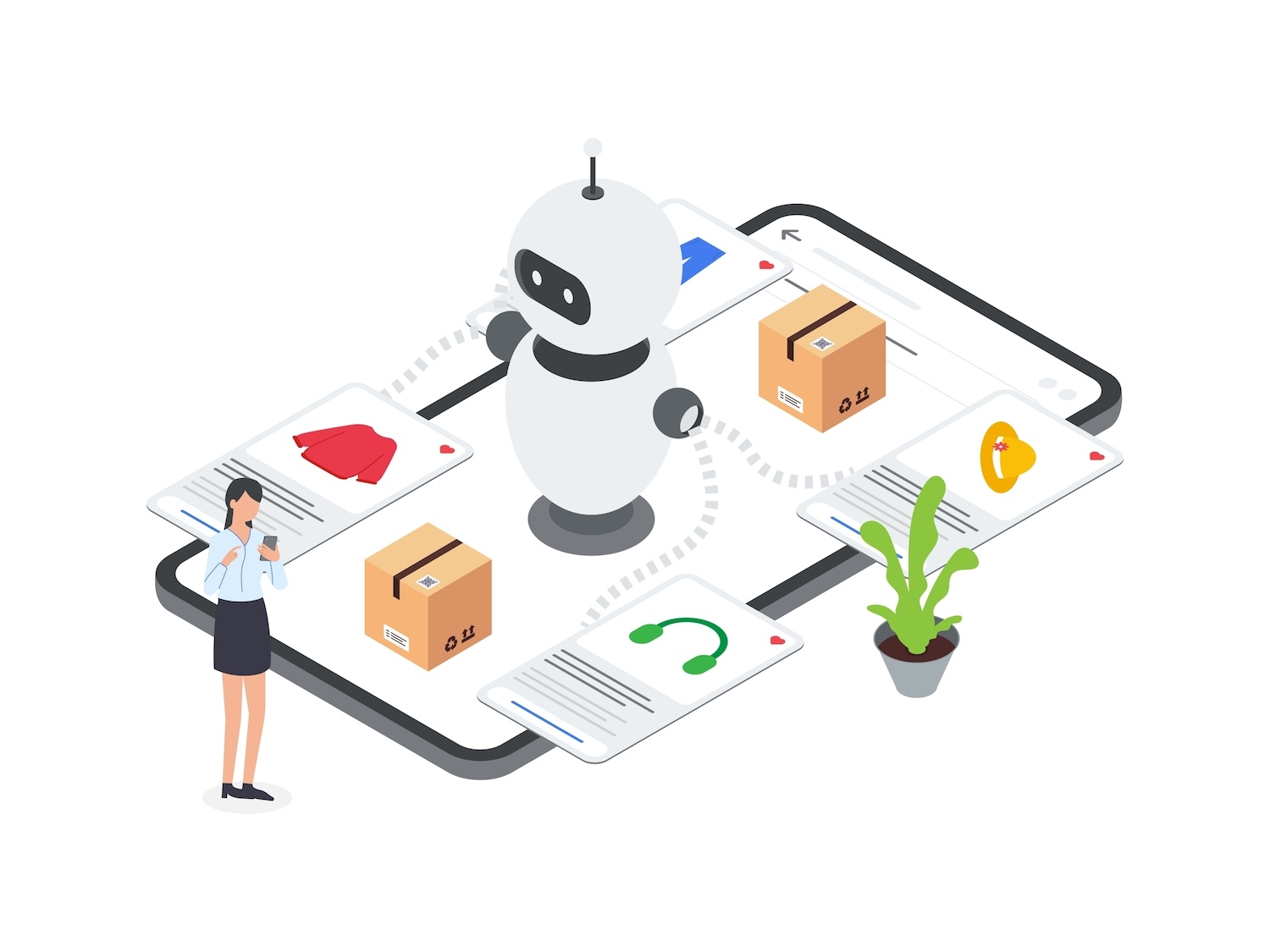We live in a digital world where every click and scroll is a chance to connect with users. But how can businesses ensure their websites and apps are easy to use and genuinely engaging?
The key often lies in artificial intelligence. AI quietly transforms how we interact with digital platforms, making each experience more intuitive and personalised. But what does that mean? This article will explore how AI-driven personalisation enhances the user experience, creating more tailored and responsive interactions.
As we dig deeper into AI's role in user experience, we discover a world where data is processed and interpreted in ways that resemble human understanding. This enables businesses to offer personalised solutions and adapt to users' needs in real-time. The impact on user engagement and satisfaction is huge, sparking questions about how far this technology can go and what it means for the future of digital interaction. We'll further explain below how AI personalisation works and the careful balance between innovation and protecting user privacy.
Understanding AI's Role in User Experience Personalisation
Artificial intelligence (AI) is playing a growing role in improving user experience by offering personalised interactions. In websites, AI uses machine learning and data analytics to understand how users behave and what they want. This insight helps create a more intuitive, customised experience. 57% of participants in a recent study reported that AI has positively impacted their performance metrics, highlighting how businesses are turning to AI to boost user engagement and operational efficiency.
AI in user experience goes far beyond gathering data; it involves advanced pattern recognition, predictive analytics, and real-time decision-making. This allows websites and digital platforms to respond to user actions and anticipate their needs and preferences before they’re even voiced. The result is a smooth, highly personalised user experience that feels natural and engaging.
The Mechanics of AI-Driven Personalisation
Data Collection and Analysis
AI-driven personalisation is built on the ability to gather and analyse large amounts of data. AI systems create detailed profiles by tracking user interactions, such as page visits, time spent on content, and how users engage with different elements. These profiles help tailor experiences that feel personal and relevant. The advanced nature of these systems allows data to be processed and analysed in real time, offering insights that businesses can act on immediately to enhance the user experience.
Real-time Personalization Techniques
AI excels in its ability to implement real-time personalisation techniques. These include:
-
Dynamic content display based on user behaviour
-
Personalised product or content recommendations
-
Customised user interfaces based on the user’s device or past preferences
By adapting web content dynamically, AI ensures that the user experience is consistently relevant and engaging. This enhances the immediate user experience and builds a long-term relationship between the user and the platform.

Benefits of AI-Powered Personalisation
Enhanced User Engagement
AI-crafted personalised content greatly enhances user engagement. People are more likely to interact with content that aligns with their interests and past behaviour, often resulting in longer time spent on the site. This increased engagement is significant for e-commerce sites and digital media outlets, where user retention is vital to business success.
Improved User Satisfaction and Retention
AI-driven personalisation boosts user satisfaction by making interactions smoother and more relevant. This relevance is crucial for creating a positive user experience, which increases the likelihood of users returning to the platform. Higher satisfaction and retention improve user metrics and are critical competitive advantages in the digital world.
Overcoming Challenges with AI Personalisation
Addressing Privacy Concerns
While AI personalisation offers numerous benefits, it also raises significant privacy concerns. Users are increasingly aware of how their data is used, making transparency and consent crucial components of any AI-driven system. Strategies to balance personalisation with privacy include:
-
Clear user consent mechanisms
-
Solid data protection measures
-
Transparent policies on data use
These strategies help build trust and ensure that personalisation efforts are considered valuable rather than invasive.
Technical Implementation
Integrating AI into existing systems poses several technical challenges, including data integration, compatibility, and scalability. Overcoming these challenges often requires:
-
Comprehensive planning and testing
-
Investment in scalable infrastructure
-
Continuous training and updating of AI models
These steps ensure that AI systems function effectively and remain adaptable to evolving user needs and technological advancements.
Future of AI in Personalising User Experience
Emerging Technologies and Trends
The future of AI in personalisation will likely be driven by advancements in machine learning, improved data processing power, and more refined user modelling. These innovations will allow even more accurate predictions of user preferences and behaviours, further enhancing personalised experiences and making interactions more tailored and seamless.
Preparing for a More Personalised Web
Adopting AI technologies is critical for businesses looking to stay ahead in the personalisation game. Tips for effectively leveraging AI include:
-
Staying informed about AI advancements
-
Investing in AI talent and technologies
-
Prioritising user-centric strategies in AI implementations
By focusing on these areas, businesses can boost their current user engagement strategies and prepare themselves for future trends in AI-driven personalisation.
AI's role in personalising user experience is both transformative and expanding. As AI technologies evolve, they offer new possibilities for creating and delivering digital experiences that are more customised and user-centric than ever before.
Conclusion: Navigating the Future of AI-Enhanced User Experiences
Artificial intelligence has become crucial in personalising user experiences, turning basic functionality into tailored interactions that deeply connect with users. By leveraging advanced AI technologies, businesses can analyse extensive data in real-time, customising digital environments to match individual preferences and behaviours. This approach boosts user engagement and satisfaction, setting a high standard for digital services. However, maintaining a balance between personalisation and privacy is essential. A transparent and respectful approach to data handling is crucial in building trust and nurturing long-term user relationships.
Advancements in AI promise to refine these interactions further, making digital platforms even more intuitive and user-focused. This evolution aims to create experiences uniquely tailored to each individual, ensuring that every digital interaction is engaging and efficient. As businesses adapt to this dynamic environment, integrating AI with user experience provides an exciting vision of the future—not just personalised but profoundly so.


